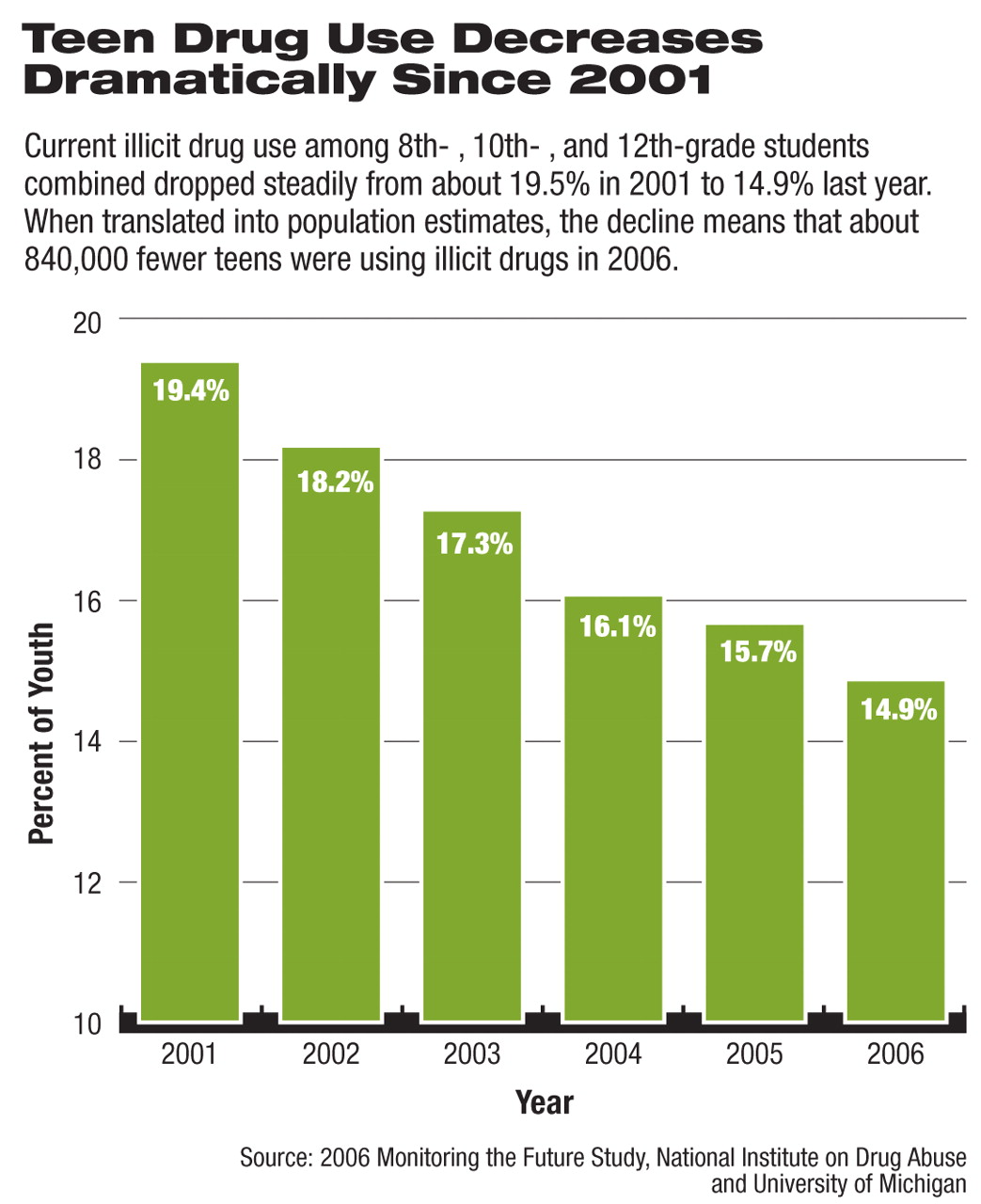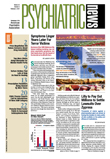Illicit drug use among young people dropped by more than 20 percent during the last five years, according a government-funded survey, but the use of prescription painkillers such as Oxycontin and Vicodin remains at peak levels.
This is the mixed news from government officials who spoke at a press conference in Washington, D.C., this past December to discuss the latest findings from the annual survey.
When extrapolated to population estimates, the data indicate that approximately 840,000 fewer teens used illicit drugs in 2006 than in 2001, according to John Walters, director of the Office of National Drug Control Policy. “Drug use is associated with the risk of school failure, unwanted pregnancy, violence, car accidents, and psychological and physical illness,” he said. “The benefits gained [by youth from lower illicit drug use] during this five-year period will last for the rest of their lives.”
The Monitoring the Future study is conducted each year by University of Michigan researchers who survey a representative sample of about 48,500 eighth, 10th, and 12th graders from 400 secondary schools, both public and private. The National Institute on Drug Abuse (NIDA) funds the study.
About a fifth (21 percent) of eighth graders, over a third (36 percent) of 10th graders, and about half (48 percent) of 12th graders have taken any illicit drug during their lifetimes, according to the findings. The encouraging news, however, is that current use of Marijuana (including hashish) declined nearly 25 percent for eighth, 10th, and 12th graders combined from 2001 to 2006. marijuana, the most widely used of the illicit drugs, showed the fifth consecutive year of decrease among 10th and 12th graders. For example, marijuana use for seniors dropped from 22.4 to 18.3 percent over the past five years. Among 10th graders, marijuana use fell from 19.8 percent in 2001 to 14.2 percent in 2006.
After declining several years ago, marijuana use has remained steady for eighth graders—over the past three years, about 6.5 percent of them have reported current marijuana use.
Officials noted that changes in the overall use of illicit drugs from 2005 to 2006 were not significant for students in any of the three grades studied.
Methamphetamine use declined among 10th graders over the past year. Annual prevalence rates for 8th and 10th graders were 1.8 in 2006 and 2.5 percent for 12th graders. Since 2001, among all grades combined, current methamphetamine use has dropped from 1.4 percent to 0.7 percent.
“I'm encouraged by the trend of decreased meth use by young people,” said U.S. Attorney General Alberto Gonzales. “I believe that our hard work and some of our innovative approaches have contributed to trends that we see in this report.”
Use of amphetamines, which press reports indicate has been soaring among adults, has been dropping among teens since peaks in 1996 for eighth and 10th graders, from 8.1 percent to 4.7 percent and 12.1 to 7.9 percent, respectively.
Some Rates Hold Steady
A number of drug usage rates remained steady among all three grades over the past year, including those for inhalants, LSD, powder cocaine, crystal methamphetamine, heroin, tranquilizers, anabolic steroids, and sedatives. Trends over the past five years show decreases in current use for some of these drugs, such as ecstasy (for instance, 2.8 percent of seniors used ecstasy in 2001 while just 1.3 percent did last year).
Past-year steroid use among seniors dropped from 2.5 percent in 2002 to 1.8 percent last year, but those levels have remained steady since then. Past-year use in 2006 among eighth graders was .9 percent and 1.2 percent for 10th graders.
Prescription-Drug Use Bucks Trend
One major area of concern for government officials is the nonmedical use of prescription painkillers among young people. For instance, past-year Oxycontin use increased among 12th graders from when it was first measured in 2002 (4 percent) until 2005, when use peaked at 5.5 percent. In 2006, past-year Oxycontin use among seniors dropped to 4.3 percent.
Among younger students, Oxycontin use reached its highest levels to date—2.6 percent of eighth graders and 3.8 percent of 10th graders used it in 2006.
In addition, nearly 1 in 10 seniors had abused Vicodin (9.7 percent) during the preceding year, according to the survey. Marijuana is the only drug that surpassed Vicodin in terms of prevalence rates.
Said NIDA Director Nora Volkow, M.D., “these findings point to the need to strengthen our campaign against the abuse of prescription drugs. We still have a lot of work ahead of us.”
Use of sedatives also increased steadily over the past decade or so. Among 12th graders, sedative use rose from 2.8 percent in 1993 to 7.2 percent in 2005 but fell last year to 6.6 percent.
In addition, in the 2006 survey researchers asked students for the first time whether they had abused over-the-counter cough and cold medicines containing dextromethorphan. It turned out that 4 percent, 5 percent, and 7 percent of eighth, 10th, and 12th graders, respectively, abused these drugs in the past year, according to the study's principal investigator, Lloyd Johnston, Ph.D.
“These drugs can cause brain damage and death in high doses,” he noted. “My guess is that young users don't understand the dangers.”
Findings from the 2006 Monitoring the Future Survey are posted at<www.monitoringthefuture.org/>.▪

